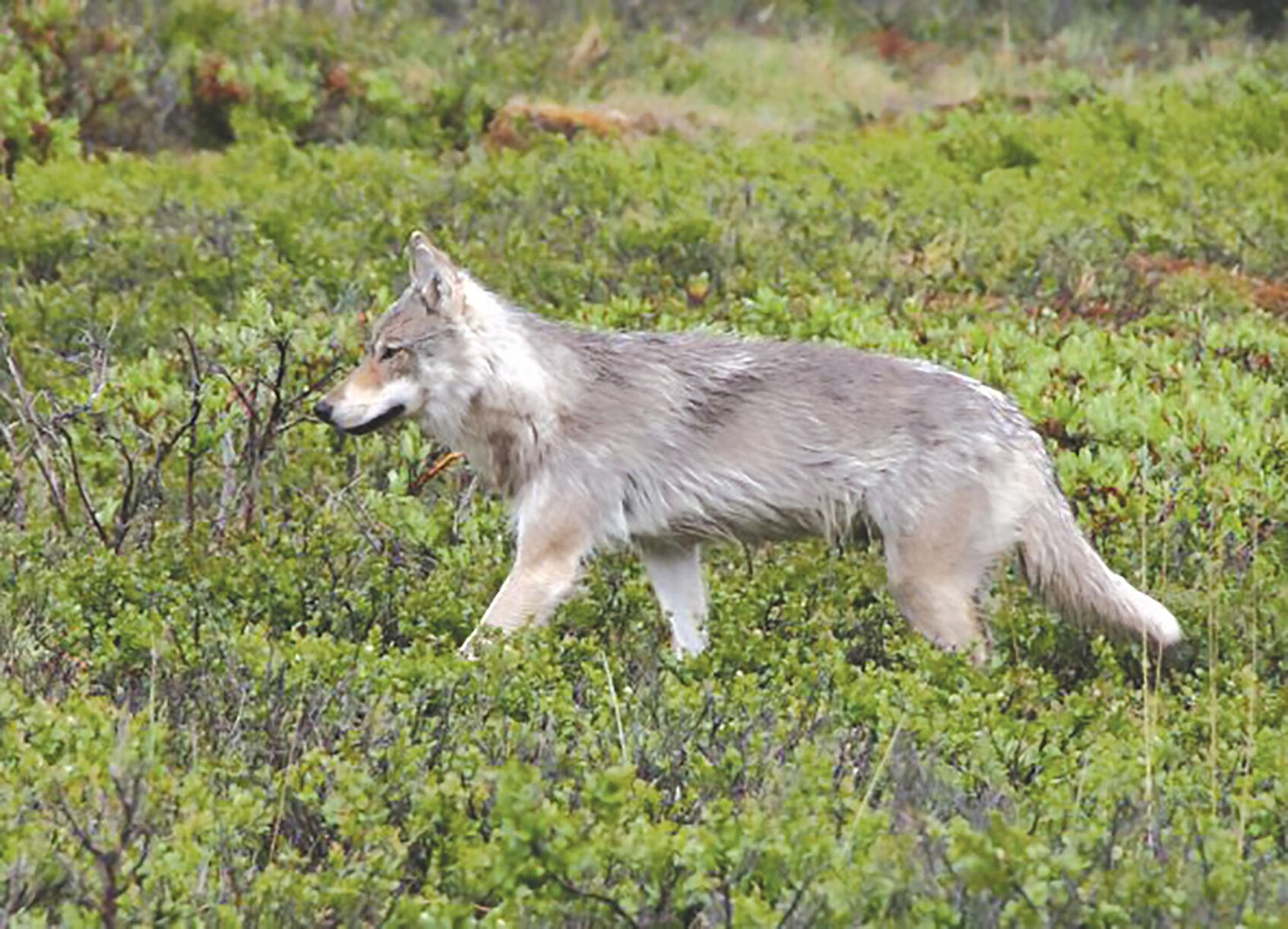County objects to wolf trapping, hunting expansion
Wolf hunting and trapping in Idaho received a significant boost last winter after Fish and Game commissioners voted to open up year-round wolf hunting across most of the state and raise tag limits to 15 wolves per person.
That trajectory could continue in Blaine County this year. On Jan. 28, the seven-member Fish and Game Commission will review a proposal from the Idaho Department of Fish and Game’s regional Magic Valley office seeking to expand wolf trapping areas and seasons in the Wood River Valley.
The proposal itself is not originally from the Magic Valley office, but rather from two organizations: Ponderay-based Foundation for Wildlife Management and the Idaho Trappers Association, based in Fairfield. Both organizations are hoping to roll out wolf trapping in Blaine County and extend the wolf-hunting season in local Game Units 48 and 49—located on either side of state Highway 75—from 11 months to year-round.
To date, wolf trapping has not been permitted in the county. Though Fish and Game proposed a trapping season for Units 48 and 49 in 2019, that bid was withdrawn after residents voiced concerns over pets, children and other wildlife interacting with the traps.
“We have different viewpoints and different economic perspectives,” Blaine County Commissioner Jacob Greenberg said in a meeting on Tuesday. “We’re a tourist-driven economy and recreation is a big part of that, and most people just don’t hold the same perspective as [ITA and the Foundation for Wildlife Management].”
Craig White, regional supervisor of the Magic Valley office, noted during the meeting that the wolf trapping proposal for Blaine County is “not formal” at this point but will be heard by the Fish and Game Commission “to start to get ready for that March season setting.” Any person or group can submit a proposal, he said.
The Fish and Game Commission, an oversight body for the department, sets game season lengths and bag limits.
“We work closely with them if they would like to see something brought forward,” White said.
Outside of the Wood River Valley, foothold traps and snares intended for wolves have dealt tragic outcomes for pets and their owners. In 2013, according to the Idaho Conservation League, more than 30 dogs were caught in such traps in Idaho.
After a harrowing run-in with a wolf trap this month, Idaho Sen. Michelle Stennett, D-Ketchum, is now asking for the devices to be clearly marked and set back farther from county and U.S. Forest Service roads.
On Jan. 2, Stennett experienced what she considers “the most helpless, agonizing 80 minutes” of her life after her dog, Teagan, got his leg clamped in the jaws of a wolf trap near Mackay.
Stennett recounted the event in a Thursday evening email to the Idaho Mountain Express. She was hiking with a few friends along a county road “popular for families to find their Christmas trees, snowshoe, backcountry ski, hike, bike, ride and fish” when the incident took place, she said.
“We were about 4 miles from my truck when we heard a horrible scream from my golden retriever,” Stennett wrote. “He was on the right of way just off the road, slashing at something on the ground. We ran to him with a sinking feeling as we saw his leg was in a white, self-proclaimed ‘X-treme Wolf Trap.’”
As Stennett worked to uncover the 10-pound trap from the snow, her dog bit both her hands, dislocating her thumb and causing puncture wounds. Despite her injuries, Stennett joined her friends in trying to disable the trap with their weight.
“Our combined weight didn’t budge it and nothing in our possessions worked. There was no cell service,” she wrote. “It was the most helpless, agonizing 80 minutes of my life with my dog in my lap as he was violently shaking, going into shock … I desperately tried to position the trap to get some blood to his leg and paw and lessen the extreme pain he was enduring. I prayed and prayed and cried.”
Two male friends who “miraculously drove up” used their combined weight to eventually pry open the trap, Stennett said, averting what could have been a grim outcome.
“It was the most helpless, agonizing 80 minutes of my life with my dog in my lap.”
Sen. Michelle Stennett, D-Ketchum
Stennett said her experience could become more common as more people relocate to Idaho and venture into the backcountry.
“As our population grows, our loved ones and more wildlife will indiscriminately get hurt,” she wrote.
She noted that Fish and Game does not require trappers to use any flagging or indication that a trap is present, and state law also prohibits destroying, disturbing or removing a trap. The particular device that snared her pet was “clearly illegal,” she wrote, as it was missing a name, address or assigned Fish and Game number.
“If you cannot open a trap and must move it to save someone’s limb or life, you can be fined and jailed. … [M]y moving a trap to make my dog more comfortable, or if I had disassembled the trap to get him out of it, is unlawful. This is absurd.”
Blaine County resident Janie Davidson, who was with Stennett during the incident, described the day as “completely traumatic” for the group of hikers.
“I cannot see in our Wood River Valley opening up trapping with the number of people that recreate here,” she said Tuesday.
Blaine County Commissioners Angenie McCleary and Dick Fosbury strongly objected to the proposal this week. McCleary said she had received 50 public comments opposing wolf trapping.
“I understand that the ultimate decision is with the Fish and Game Commission, but I would like to advocate on behalf of Blaine County as strongly as possible that we don’t have trapping here,” she said Tuesday.
Sun Valley Institute Director Aimee Christensen said in a public comment session that trapping contributes little to the local economy, adding that Idaho’s wolf trappers “are capturing nearly as many nontarget species” as they are capturing wolves, per Fish and Game Data.
“Nearly half, or 47%, of the species captured between [2012 and 2019] were incidental, including rare fishers, wolverines, eagles and lynx,” she said.
Garrick Dutcher, co-founder of Living With Wolves, agreed that wolf trapping and a prolonged wolf hunting season would not reflect the interests of this community.
“Our [game] units are the last two units out of 99 units where there is no wolf trapping as of yet in Idaho. But one size doesn’t necessarily fit all,” he said. “One of the premises for managing wolves so aggressively is to create more opportunity for big game hunters, primarily elk hunters. But we currently have elk populations at or approaching an all-time record high in the state, and large numbers of elk across the valley.”
Dutcher added that the Foundation for Wildlife Management pays trappers up to $1,000 per wolf killed, and the program is funded in part by grants from the Idaho Fish and Game Commission.
“There is financial incentive, basically making an economy out of wildlife that really doesn’t have much place in a community such as ours,” he said.
Rusty Kramer, president of the Idaho Trappers Association and board member of the Foundation for Wildlife Management, said wolf trapping would benefit Blaine County because its game units “have some of the highest livestock depredations in the entire state.”
Wood River Wolf Project member Sarah Michael countered Kramer’s statement.
“Units 48 and 49 are not listed on the [Foundation for Wildlife Management’s] list of high depredation areas,” she said. “[Livestock] mortality from wolves here is not very high and we have data to prove that.”
Justin Webb, Foundation for Wildlife Management executive director and co-director of the Idaho Trappers Association, said in an email to the Express that the foundation’s mission is to “properly manage predator populations, for the good of the ecosystem in which those predators live.” Webb wrote that the foundation’s $1,000-per-wolf program is not a bounty system, and bounty systems aren’t inherently harmful.



